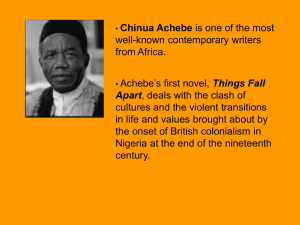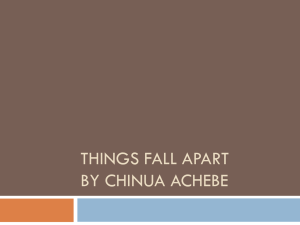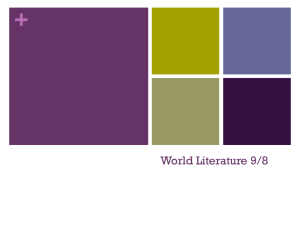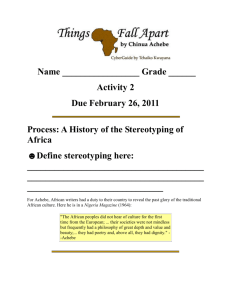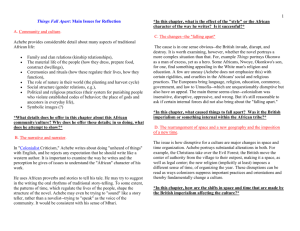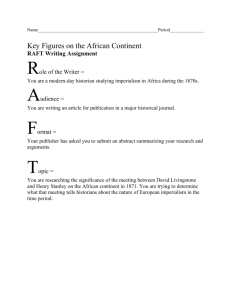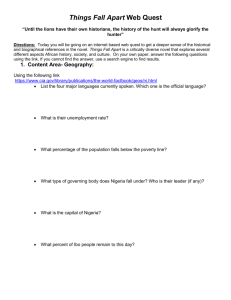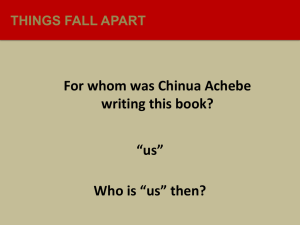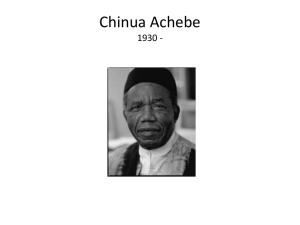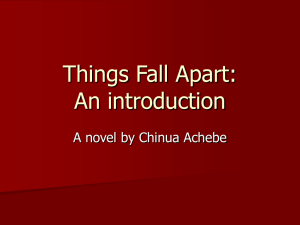File - English II with Mr. Davis
advertisement
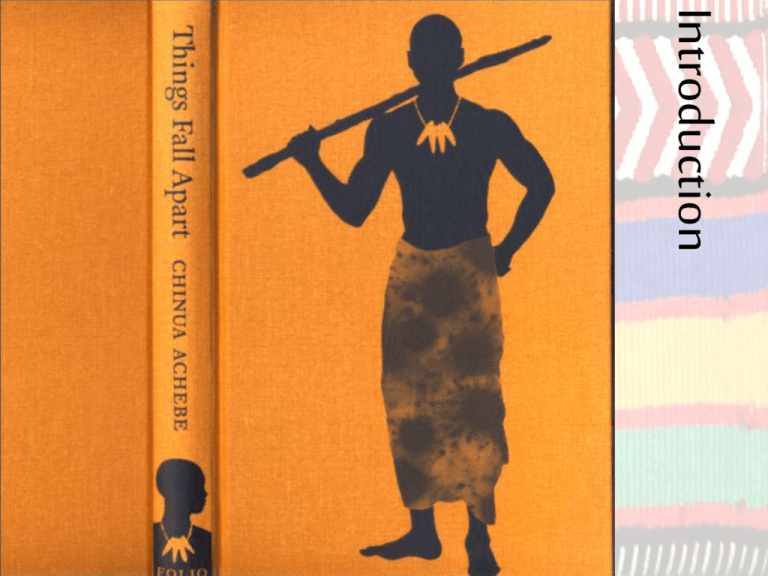
Introduction •Published in 1958 • In 1960 there are only six novels by Africans published in the West. •Achebe has been called the Father of Modern African Writing because he sort of opened the door for Africans to reclaim their past and their traditions and tell their own story in their own way. •Nigeria •A postimperialist text about colonization in Africa •Late nineteenth, early 20th century •Ibo culture African Complexity Social Systems Cultural Practices Infrastructure Values/Beliefs Art, Expression, Celebrations Marlo, the narrator, says at one point in Heart of Darkness, "These chaps had no earthly reason for any kind of scruple. Restraint? I would just as soon of expected restraint from a hyena prowling among the corpses of a battlefield." Achebe's novel is written precisely to overturn this image of Africa. •Born in 1930 at the high watermark of British Imperial involvement in Africa. •He was raised in a Christian family. •Baptized Albert, in honor of the Prince of Wales. •Phenomenal student; went to an elite secondary school. •Has said that when he read as a youth, Gulliver's Travels and Treasure Island and David Copperfield, he found himself siding with the white people. •At university felt like that cannon was really coming out of the author's cultural ignorance. •Achebe wanted to learn about his own past through his own people. •He wanted to reflect the stories of his people, without a white messenger. Nigeria is an invention of the British. The very name itself was conjured up by the wife of the first and most important British Governor, Lord Lugard. Political/Cultural Imperialism Spiritual Imperialism •Nigerian Independence: 1963 •What will we be? •American Civil Rights Movement •What will we be? Questions readers to look at •How are beliefs are created and destroyed? •How do changes, both good and bad, affect the group? The individual? •How does man process a changing world? What is gained and compromised? •How do we move & progress instead of regress when what we know is taken from us? •What causes some to fall apart? •The “Congo Village,” or Kongoslandsbyen, was a fake tribal village built in Frogner Park for the 1914 Oslo World Fair. Visitors could pay to gawk at 80 African men, women and children —apparently Congolese — living in thatched huts, wearing traditional garments and doing “indigenous” things. •In just five months it attracted 1.4 million visitors, or roughly half the population of Norway. A newspaper at the time described it as “exceedingly funny” while another enthused, “it’s wonderful that we are white!” •Reopened in 2014 by two Norwegian artists, the recreation was sponsored by the government as a project to open up dialogue on if Norway really is a post-racial society freed from its often untold past. •Bwa Mwesigire, a Ugandan academic has stated “We are not in a post-racial world. [The artitsts] can’t exonerate themselves because they mean well. Indeed, if they are serious about creating discussions of racism they ought to think deeper about the likelihood that their project may entrench the same prejudices they claim to fight.” •And Muauke B. Munfocol, a DRC-born Norwegian, questions the decision of the Norwegian government to sponsor a human zoo, rather than put its money toward more constructive forms of dialogue.
